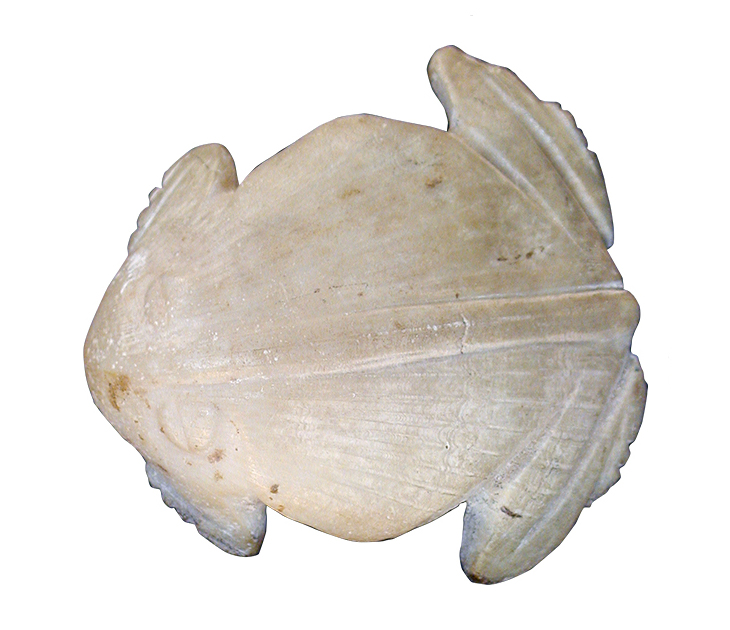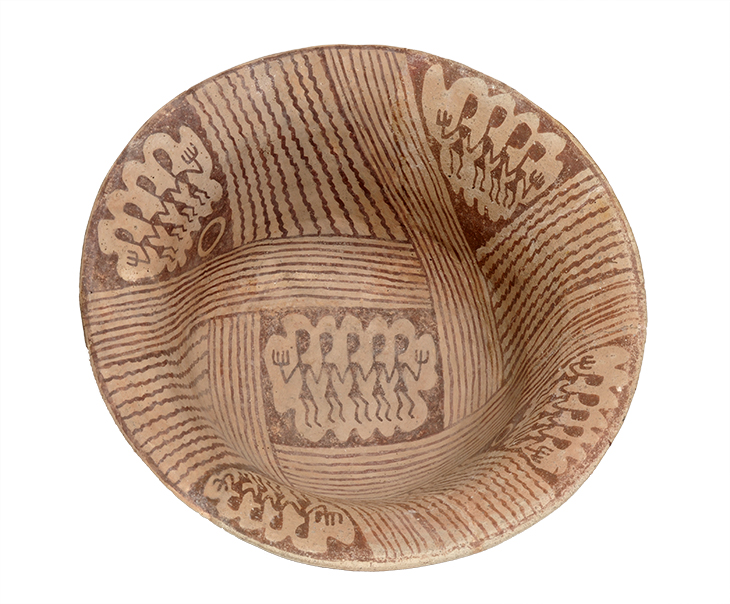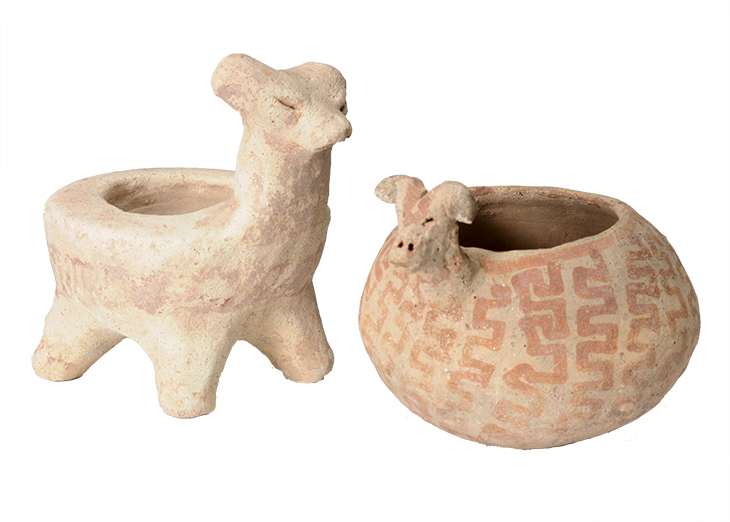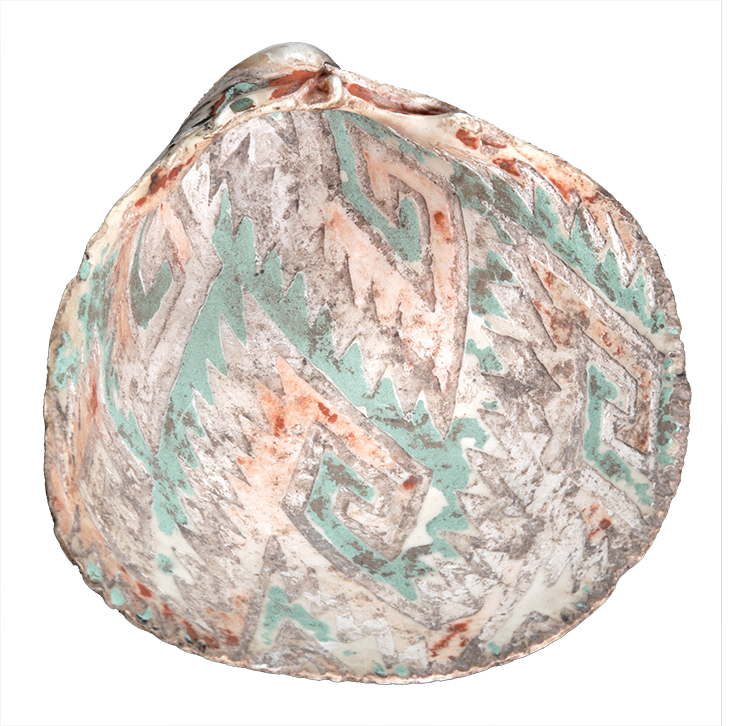Last week, US government officials acknowledged that contractors have started ‘controlled blasting’ to overhaul fencing along the Mexico border. The work is unfolding in the Organ Pipe Cactus National Monument in southwestern Arizona. Founded in 1937, and recognised by UNESCO, the monument proclaims to be ‘one of the best preserved examples of the Sonoran Desert wilderness’, with majestic mountain ranges, fields of towering saguaro cactuses, and scores of cultural sites left behind by Native Americans, Mexicans, and European settlers. Trump’s new ‘big, beautiful wall’ imperils key elements of this heritage.
This turn of events has been both somehow shocking and predictable. In June of 2019, archaeologists surveyed some of the area awaiting construction, which would include replacing existing fencing erected under the Obama Administration with a 30-foot-tall steel palisade, roadwork, and surveillance equipment. The team spent five days walking just a portion of the construction area. ‘Numerous previously unrecorded archaeological resources were identified, plotted, and evaluated,’ the survey report summarised. ‘These include 35 isolated [artefacts], 20 isolated features, and five archaeological sites.’

Effigy pendant in the form of a frog (spadefoot toad?) (c. 1150–1450), Glycymeris shell. Arizona State Museum
The Trump administration is providing only limited information about its impact on the monument’s heritage. However, based on the archaeologists’ report, it is possible to judge what might be at stake.
Two of those five archaeological sites together contain nearly 200 artefacts on the surface, left behind by the people known as the Hohokam. Dating to the Classic Period (AD 1150–1400), these sites might have once been villages or use areas of one of the American Southwest’s most fascinating cultures. During this period, the Hohokam built canal networks that fed extensive cornfields, which sustained sprawling towns along the rivers of what is now Tucson and Phoenix. Priests directed the building of multistorey earthen temples and large ball courts for ceremonial games. The Hohokam influence spread across the US Southwest and northern Mexico, and linked into trade networks west to the Pacific Ocean and far down into Central America.

Red-on-buff flare-rim bowl with human forms (c. 850–950), Santa Cruz
The arts of the people we call the Hohokam are stunningly beautiful and spiritually powerful. Ceramics include jars and bowls, often with red paint over a tan-coloured polished surface, drawn in geometric patterns or abstracted animal forms. Other painted vessels depict dancers, perhaps the precursors to the Kachina dances that still persist among the Pueblo Indians today. Artists also used the clay to create animal and human forms that resonate with the celebrated effigy jars of the Moche of Peru.
They also carved a wild array of animals – birds, snakes, frogs – from shell and stone. Many of these pieces would have been jewellery, worn around wrists and necks, or as pendants hanging from piercings. The Hohokam were experts at employing turquoise, particularly using the blue-green mineral – a likely symbol of water and life – as an inlay on shell. They also used an etching technique for shell, and pecked out images of nature and the supernatural on the outcroppings of rocks, leaving behind murals in stone.

Red-on-buff bighorn sheep effigy vessels (c. 950–1150), Sacaton, Arizona. Arizona State Museum
More quotidian artefacts give insights into Hohokam culture and express ancient aesthetics. Farming implements, children’s toys, tools to hunt – all reveal how the Hohokam imagined and crafted their world.
Of course, we do not know if more treasures lie beneath the surface. Yet these two sites are only a part of the region’s vibrant cultural landscape. Stone tools are scattered over the other three archaeological sites NPS archaeologists recorded that could be upwards of 11,000 years old. The isolated artefacts (such as shell and ceramic fragments) and features (such as hearths and sleeping areas) reveal a broad and diverse use of the land over millennia. Crisscrossing the region is a network of trails that connect the O’odham Indians of southern and central Arizona – likely descendants of the Hohokam, along with Pueblo tribes – to the Pacific Ocean. These are ceremonial pathways used both to gather precious resources like salt and shells and are an integral part of O’odham religious practices. The wall cuts the O’odham realm in half and restricts their ability to visit kin and pilgrimage to holy places.

Etched and painted shell, Laevicardium elatum, red and green pigments (c. 1050–1200). Arizona State Museum
The construction crew’s blasting seems to be aimed at straightening a section of fencing. The government has evaded clarifying whether previously identified archaeological sites are in this area, but in any case the O’odham have expressed concern about the effects of blasting on the desert’s precious plants and animals. For them, nature is cultural. As the National Park Service has noted, cactus species such as the saguaro are used for food and rituals; they are sacred. Ned Norris Jr, the Tohono O’odham Nation chairman, has said: ‘We feel very strongly that this particular wall will desecrate this area forever.’

The ancient heritage at risk from Trump’s border wall
Red-on-buff plate with a bird holding a fish in its beak (c. 900–1150), Sacaton, Arizona. Arizona State Museum
Share
Last week, US government officials acknowledged that contractors have started ‘controlled blasting’ to overhaul fencing along the Mexico border. The work is unfolding in the Organ Pipe Cactus National Monument in southwestern Arizona. Founded in 1937, and recognised by UNESCO, the monument proclaims to be ‘one of the best preserved examples of the Sonoran Desert wilderness’, with majestic mountain ranges, fields of towering saguaro cactuses, and scores of cultural sites left behind by Native Americans, Mexicans, and European settlers. Trump’s new ‘big, beautiful wall’ imperils key elements of this heritage.
This turn of events has been both somehow shocking and predictable. In June of 2019, archaeologists surveyed some of the area awaiting construction, which would include replacing existing fencing erected under the Obama Administration with a 30-foot-tall steel palisade, roadwork, and surveillance equipment. The team spent five days walking just a portion of the construction area. ‘Numerous previously unrecorded archaeological resources were identified, plotted, and evaluated,’ the survey report summarised. ‘These include 35 isolated [artefacts], 20 isolated features, and five archaeological sites.’
Effigy pendant in the form of a frog (spadefoot toad?) (c. 1150–1450), Glycymeris shell. Arizona State Museum
The Trump administration is providing only limited information about its impact on the monument’s heritage. However, based on the archaeologists’ report, it is possible to judge what might be at stake.
Two of those five archaeological sites together contain nearly 200 artefacts on the surface, left behind by the people known as the Hohokam. Dating to the Classic Period (AD 1150–1400), these sites might have once been villages or use areas of one of the American Southwest’s most fascinating cultures. During this period, the Hohokam built canal networks that fed extensive cornfields, which sustained sprawling towns along the rivers of what is now Tucson and Phoenix. Priests directed the building of multistorey earthen temples and large ball courts for ceremonial games. The Hohokam influence spread across the US Southwest and northern Mexico, and linked into trade networks west to the Pacific Ocean and far down into Central America.
Red-on-buff flare-rim bowl with human forms (c. 850–950), Santa Cruz
The arts of the people we call the Hohokam are stunningly beautiful and spiritually powerful. Ceramics include jars and bowls, often with red paint over a tan-coloured polished surface, drawn in geometric patterns or abstracted animal forms. Other painted vessels depict dancers, perhaps the precursors to the Kachina dances that still persist among the Pueblo Indians today. Artists also used the clay to create animal and human forms that resonate with the celebrated effigy jars of the Moche of Peru.
They also carved a wild array of animals – birds, snakes, frogs – from shell and stone. Many of these pieces would have been jewellery, worn around wrists and necks, or as pendants hanging from piercings. The Hohokam were experts at employing turquoise, particularly using the blue-green mineral – a likely symbol of water and life – as an inlay on shell. They also used an etching technique for shell, and pecked out images of nature and the supernatural on the outcroppings of rocks, leaving behind murals in stone.
Red-on-buff bighorn sheep effigy vessels (c. 950–1150), Sacaton, Arizona. Arizona State Museum
More quotidian artefacts give insights into Hohokam culture and express ancient aesthetics. Farming implements, children’s toys, tools to hunt – all reveal how the Hohokam imagined and crafted their world.
Of course, we do not know if more treasures lie beneath the surface. Yet these two sites are only a part of the region’s vibrant cultural landscape. Stone tools are scattered over the other three archaeological sites NPS archaeologists recorded that could be upwards of 11,000 years old. The isolated artefacts (such as shell and ceramic fragments) and features (such as hearths and sleeping areas) reveal a broad and diverse use of the land over millennia. Crisscrossing the region is a network of trails that connect the O’odham Indians of southern and central Arizona – likely descendants of the Hohokam, along with Pueblo tribes – to the Pacific Ocean. These are ceremonial pathways used both to gather precious resources like salt and shells and are an integral part of O’odham religious practices. The wall cuts the O’odham realm in half and restricts their ability to visit kin and pilgrimage to holy places.
Etched and painted shell, Laevicardium elatum, red and green pigments (c. 1050–1200). Arizona State Museum
The construction crew’s blasting seems to be aimed at straightening a section of fencing. The government has evaded clarifying whether previously identified archaeological sites are in this area, but in any case the O’odham have expressed concern about the effects of blasting on the desert’s precious plants and animals. For them, nature is cultural. As the National Park Service has noted, cactus species such as the saguaro are used for food and rituals; they are sacred. Ned Norris Jr, the Tohono O’odham Nation chairman, has said: ‘We feel very strongly that this particular wall will desecrate this area forever.’
Unlimited access from just $16 every 3 months
Subscribe to get unlimited and exclusive access to the top art stories, interviews and exhibition reviews.
Share
Recommended for you
Bowled over – the painted pots of the ancient Mimbres people
Around a thousand years ago in the American Southwest, a highly sophisticated ceramic tradition emerged
Polar bare – how climate change is destroying archaeologically rich sites in the Arctic
Thawing permafrost means the near-perfect preservation of ancient material in the Arctic will soon be a thing of the past
‘X discovered under X’ – the archaeologist’s dream?
A Roman fort has been discovered under a bus station in Exeter… and it’s the stuff that headlines are made of, says Rakewell